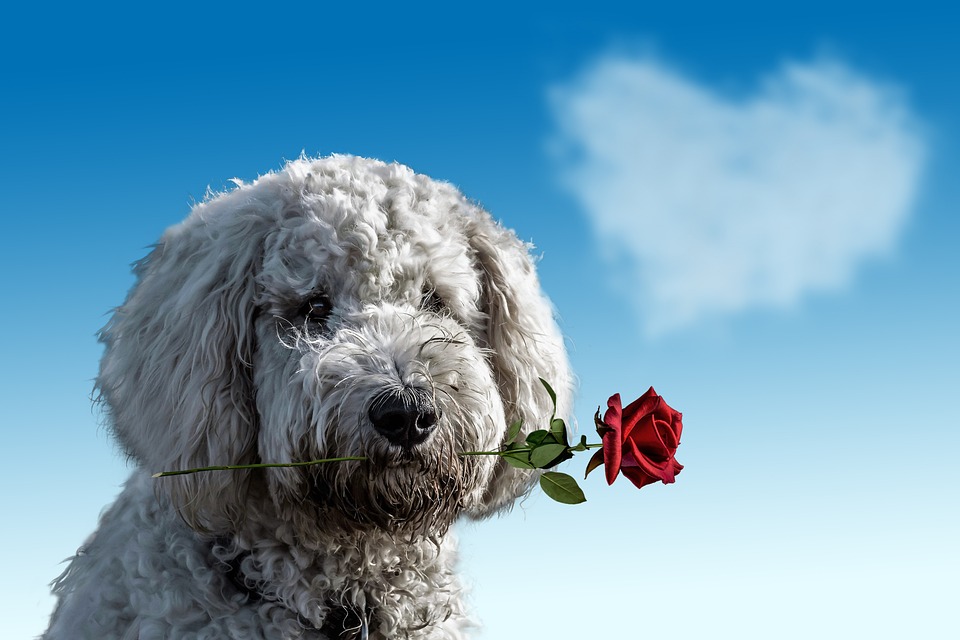Unleashing Your Dog’s Potential: The Power of Freestyle Dog Training
Introduction:
Freestyle dog training, also known as musical canine freestyle, is a captivating activity that combines obedience, tricks, and dance-like movements with your four-legged companion. This unique form of training not only strengthens the bond between you and your dog but also enhances their mental and physical abilities. In this article, we will explore the incredible benefits of freestyle dog training, provide some valuable tips to get started, and answer frequently asked questions to help you embark on this rewarding journey with your furry friend.
I. Understanding Freestyle Dog Training
1. What is freestyle dog training?
Freestyle dog training involves choreographing routines to music, where dogs and their handlers perform a variety of tricks, obedience commands, and movements. It is a creative and expressive way to showcase the dog’s skills and the bond between dog and owner.
2. How does freestyle training differ from traditional obedience training?
While traditional obedience training focuses on teaching dogs basic commands and behaviors, freestyle training goes beyond that by incorporating tricks, dance-like movements, and music. It allows for more creativity and self-expression, making it an enjoyable and engaging experience for both dog and owner.
3. The history and evolution of freestyle dog training.
Freestyle dog training originated in the 1980s when dog trainers began incorporating music and choreography into their obedience routines. It has since evolved into a popular dog sport and has gained recognition worldwide.
II. The Benefits of Freestyle Dog Training
1. Mental stimulation and cognitive development.
Freestyle training challenges your dog’s mind as they learn new tricks, memorize routines, and respond to cues. This mental stimulation enhances their cognitive abilities, keeping them mentally sharp and engaged.
2. Physical fitness and coordination.
The movements and tricks involved in freestyle training improve your dog’s physical fitness, strength, and coordination. It helps them develop better body awareness and control, leading to improved overall physical health.
3. Strengthening the bond between dog and owner.
Freestyle training requires trust, communication, and teamwork between dog and owner. By working together on choreographed routines, you strengthen the bond and deepen the connection with your furry friend.
4. Boosting confidence and self-esteem.
As your dog learns new tricks and successfully performs complex routines, their confidence and self-esteem grow. Freestyle training provides a positive environment for dogs to showcase their abilities and excel, boosting their overall confidence.
5. Enhancing obedience and impulse control.
Freestyle training reinforces obedience commands and impulse control. Dogs must listen to their handlers’ cues and execute them accurately, which improves their obedience and self-control in various situations.
III. Getting Started with Freestyle Dog Training
1. Assessing your dog’s suitability for freestyle training.
While freestyle training can be adapted for all dog breeds, it’s essential to consider your dog’s physical capabilities, temperament, and willingness to learn. Some dogs may naturally enjoy performing tricks and movements, while others may require more patience and encouragement.
2. Basic obedience training as a foundation.
Before diving into freestyle training, ensure your dog has a solid foundation in basic obedience commands such as sit, stay, come, and heel. These commands will serve as the building blocks for more complex routines.
3. Introducing tricks and shaping behaviors.
Gradually introduce your dog to various tricks and behaviors, using positive reinforcement techniques such as treats, praise, and clicker training. Break down each trick into smaller steps, shaping their behavior until they can perform the trick on command.
4. Incorporating music and choreography.
Once your dog has a repertoire of tricks, it’s time to add music and choreography to create a freestyle routine. Choose music that suits your dog’s personality and style, and start choreographing movements and tricks that flow seamlessly with the music.
5. Safety precautions during freestyle training.
Ensure a safe training environment by removing any potential hazards and using appropriate training equipment such as a well-fitted harness or collar and a sturdy leash. Avoid pushing your dog beyond their physical limits and always provide plenty of water and rest breaks during training sessions.
IV. Frequently Asked Questions (FAQs)
Q1. Is freestyle dog training suitable for all dog breeds?
A1. Yes, freestyle training can be adapted for all dog breeds. While some breeds may excel in certain movements or tricks, any dog can participate and benefit from this form of training.
Q2. How long does it take to train a dog in freestyle?
A2. The duration of training varies depending on the dog’s prior training experience, temperament, and the complexity of the routines. Consistency, regular practice, and positive reinforcement are key to achieving progress.
Q3. Can I participate in freestyle competitions?
A3. Absolutely! Freestyle dog training has gained popularity worldwide, leading to various competitions and exhibitions. Participating in these events can be a great way to showcase your dog’s talents and connect with other freestyle enthusiasts.
Q4. What equipment do I need for freestyle training?
A4. The equipment needed for freestyle training is minimal. Essential items include a leash, treats, and a suitable space for training. As you progress, you may also consider incorporating props, such as platforms or hoops, to enhance your routines.
Q5. Can older dogs learn freestyle?
A5. Age is not a barrier to learning freestyle. While older dogs may require some additional time and patience, they can still participate and enjoy the benefits of this training. Adapt the routines to their physical capabilities and ensure they receive proper warm-up and cool-down exercises.
Conclusion:
Freestyle dog training offers an exciting and versatile way to unlock your dog’s potential and create a harmonious partnership. By combining obedience, tricks, and dance-like movements, you can engage your dog’s mind, body, and spirit while strengthening your bond. Remember to start with basic obedience training, gradually introduce tricks, and have fun exploring the world of freestyle with your furry friend. With dedication, patience, and creativity, you can unleash your dog’s full potential through the power of freestyle training.









